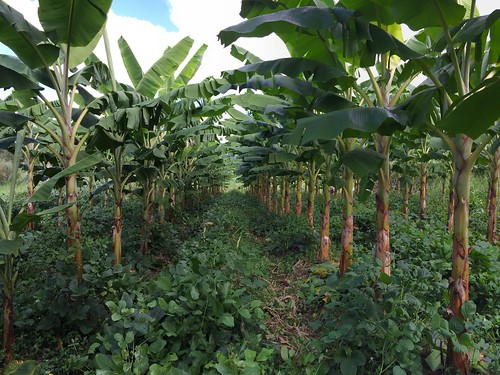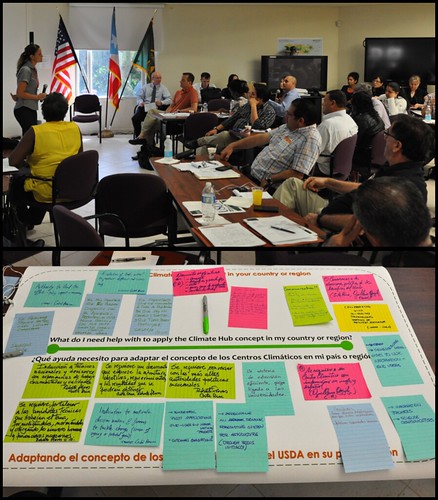
All this month we will be taking a look at what a changing climate means to Agriculture. The ten regional USDA Climate Hubs were established to synthesize and translate climate science and research into easily understood products and tools that land managers can use to make climate-informed decisions. The Hubs work at the regional level with an extensive network of trusted USDA agency partners, technical service providers, University collaborators, and private sector advisers to ensure they have the information they need to respond to producers that are dealing with the effects of a variable climate. USDA’s Climate Hubs are part of our broad commitment to developing the next generation of climate solutions, so that our agricultural leaders have the modern technologies and tools they need to adapt and succeed in the face of a changing climate.
The effects of climate change are putting farmers throughout the Latin American Caribbean to the test. From Guatemala to Puerto Rico, rising global temperatures and powerful El Niño oscillations have contributed to patterns of drought and intense rainfall, resulting in crop losses.
In response to these and future crises, the USDA Caribbean Climate Hub in Puerto Rico is helping build more resilient food systems by educating about climate change risks and adaptation and mitigation strategies. Established in 2014, the Caribbean Hub was as a part of a nationwide U.S. network designed to help farmers and managers of working lands adapt to increasing climate risk by translating climate science into workable decision support tools and information for farmers and land managers.
Much of Central America and the Caribbean have similar seasonal rainfall patterns with a dry season that historically starts around December–January. This gives way to spring rainfall in April and May. This cycle is important for staple food crops such as corn and beans and critical for the region’s climate sensitive coffee crop, which provides employment to more than 2 million people. In recent years, dry seasons have often become severe droughts, broken by extreme rainfall events and tropical storms. These patterns have led to widespread crop damage and even loss across the region. Persistent heavy rain in 2012 precipitated an outbreak of coffee rust in Central America that destroyed an estimated 20% of the region’s crop, caused $1 billion in economic damages, and displaced thousands of workers. The outbreak was followed by a severe drought in 2014 resulting in massive crop losses from Guatemala to Nicaragua. In Cuba, a series of destructive hurricanes in 2008 complicated Cuba’s efforts to recover from a prolonged drought spanning 2003 – 2007 and led to an increase in food imports. Patterns of drought and severe downpours have also been experienced in Puerto Rico and the U.S. Virgin Islands reducing productivity and increasing risk of loss among farmers who often lack the necessary resources to prepare for, or recover from such setbacks.
In 2015, The Caribbean Hub and the USDA Foreign Agriculture Service hosted the Climate Hub in the Americas workshop, which was attended by agricultural representatives from seven Central American countries as well as international non-profit organizations, university faculty, and agricultural officials from Puerto Rico and the U.S. Virgin Islands. The workshop provided an opportunity for attendees to hear about the USDA Climate Hub concept, learn from each other’s experiences in climate science development and communication, and open new lines of collaboration across international boundaries. In March of 2016, USDA Secretary Tom Vilsack announced that he and Cuban Minister of Agriculture Gustavo Rodríguez Rollero would be visiting the Caribbean Climate Hub to further discuss collaboration in addressing climate change and food security in the region.
Building sustainable food systems throughout the Latin American Caribbean in the face of climate change is a daunting challenge. However, the challenge is presenting exciting new opportunities to work across national boundaries in creating a more food secure future for the United States and all of the Americas.

